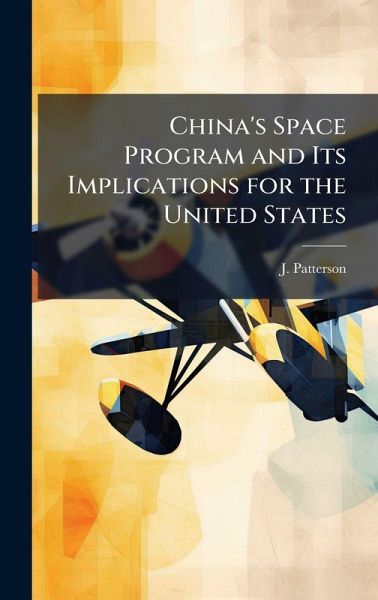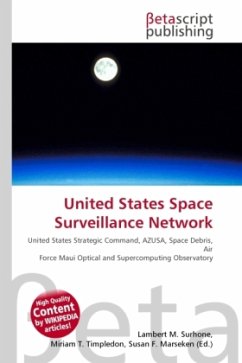
China's Space Program and Its Implications for the United States
Versandkostenfrei!
Versandfertig in über 4 Wochen
25,99 €
inkl. MwSt.
Weitere Ausgaben:

PAYBACK Punkte
13 °P sammeln!
China became a serious member of the spacefaring community in 1985 and in response, the U.S. developed agreements to limit the economic impact on U.S. space programs and to control the spread of related technology. China charges less for a space launch than a U.S. firm does and so an economic threat to the livelihood of U.S. space industries exists. The precarious U.S. launch industry is already challenged by Arianespace. The U.S. is also concerned about transferring technology to China from U.S. satellite manufacturers. The technology involved in mating satellites to boosters, measuring stres...
China became a serious member of the spacefaring community in 1985 and in response, the U.S. developed agreements to limit the economic impact on U.S. space programs and to control the spread of related technology. China charges less for a space launch than a U.S. firm does and so an economic threat to the livelihood of U.S. space industries exists. The precarious U.S. launch industry is already challenged by Arianespace. The U.S. is also concerned about transferring technology to China from U.S. satellite manufacturers. The technology involved in mating satellites to boosters, measuring stress on the satellite at launch, and the development of apogee kick motors is all transferable to missile technology and may aid China in its intercontinental ballistic missile programs. Not only has China been improving its own programs, it has also sold missiles and technologies to other countries such as Iran, Iraq, Pakistan, and India. To foster the growing relationship between China and the U.S., clear policies and agreements are needed that match our national security interests with economic reality. This work has been selected by scholars as being culturally important, and is part of the knowledge base of civilization as we know it. This work was reproduced from the original artifact, and remains as true to the original work as possible. Therefore, you will see the original copyright references, library stamps (as most of these works have been housed in our most important libraries around the world), and other notations in the work. This work is in the public domain in the United States of America, and possibly other nations. Within the United States, you may freely copy and distribute this work, as no entity (individual or corporate) has a copyright on the body of the work. As a reproduction of a historical artifact, this work may contain missing or blurred pages, poor pictures, errant marks, etc. Scholars believe, and we concur, that this work is important enough to be preserved, reproduced, and made generally available to the public. We appreciate your support of the preservation process, and thank you for being an important part of keeping this knowledge alive and relevant.












